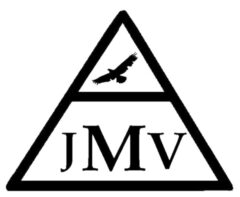Allison Navarrete-Welton, Kamran Manzoor, Taro Minami, Naomi Kramer
Cite
Navarrete-Welton A, Manzoor K, Minami T, Kramer N. Enlarging bullae and spontaneous pneumothorax associated with CPAP Use: A case series of three patients. J Mech Vent 2023; 5(1):38-44.
Abstract
Objectives
Spontaneous pneumothorax among patients with obstructive sleep apnea treated by nocturnal continuous positive airway pressure (CPAP) has not been well documented.
Methods
We present three cases of patients on chronic CPAP who experienced spontaneous pneumothorax without clear predisposing factors. Their personal and family medical histories, imaging characteristics, and CPAP settings are reviewed.
Results
In all three cases, the patients had bullae ipsilateral to the pneumothoraces that either formed (n = 1) or grew significantly (n = 2) after CPAP initiation. No other risk factors for pneumothorax or bullae were identified.
Conclusions
This case series demonstrates a need for further investigation into a possible connection between spontaneous pneumothorax, bullae development, and CPAP use.
Keywords
obstructive sleep apnea, continuous positive airway pressure, bullae, complications of noninvasive mechanical ventilation, spontaneous pneumothorax
References
| 1. Peppard PE, Young T, Barnet JH, Palta M, Hagen EW, Hla KM. Increased prevalence of sleep-disordered breathing in adults. Am J Epidemiol 2013; 177(9):1006-1014. https://doi.org/10.1093/aje/kws342 PMid:23589584 PMCid:PMC3639722 | |||
| 2. Martinez FJ. Bullous Lung Disease. In: Grippi MA, Antin-Ozerkis DE, Dela Cruz CS, Kotloff RM, Kotton CN, Pack AI, eds. Fishman’s Pulmonary Diseases and Disorders, 6e. New York, NY: McGraw-Hill Education; 2023. | |||
| 3. Berhane S, Tabor A, Sahu A, et al. Development of bullous lung disease in a patient with severe COVID-19 pneumonitis. BMJ Case Rep 2020; 13(10):e237455. https://doi.org/10.1136/bcr-2020-237455 PMid:33122234 PMCid:PMC7597492 | |||
| 4. Goldstein DS, Karpel JP, Appel D, et al. Bullous pulmonary damage in users of intravenous drugs. Chest 1986; 89(2):266-269. https://doi.org/10.1378/chest.89.2.266 PMid:3943387 | |||
| 5. Fiorelli A, Accardo M, Vicidomini G, et al. Does cannabis smoking predispose to lung bulla formation? Asian Cardiovasc Thorac Ann 2014; 22(1):65-71. https://doi.org/10.1177/0218492313478954 PMid:24585646 | |||
| 6. Kotton DN, Wilson AA. Chronic Obstructive Pulmonary Disease and α1-Antitrypsin Deficiency. In: Grippi MA, Antin-Ozerkis DE, Dela Cruz CS, Kotloff RM, Kotton CN, Pack AI, eds. Fishman’s Pulmonary Diseases and Disorders, 6e. New York, NY: McGraw-Hill Education; 2023. | |||
| 7. Hirata A, Saraya T, Arai N, et al. Giant bulla formation in the lung because of a check-valve mechanism. Respir Investig 2017; 55(1):63-68. https://doi.org/10.1016/j.resinv.2016.10.006 PMid:28012497 | |||
| 8. Bang S, Yang S, Cho SW, et al. Follow-up of blebs and bullae in pilots 40 years and older using CT. Aerosp Med Hum Perform 2019; 90(10):867-871. https://doi.org/10.3357/AMHP.5340.2019 PMid:31558195 | |||
| 9. Chang WH. Complete spontaneous resolution of a giant bulla without rupture or infection: A case report and literature review. J Thorac Dis 2017; 9(6):E551-E555. https://doi.org/10.21037/jtd.2017.05.53 PMid:28740695 PMCid:PMC5506147 | |||
| 10. Casha AR, Manché A, Camilleri L, et al. A biomechanical hypothesis for the pathophysiology of apical lung disease. Med Hypotheses 2016; 92:88-93. https://doi.org/10.1016/j.mehy.2016.04.044 PMid:27241265 | |||
| 11. Tsuboshima K, Nagata M, Wakahara T, et al. Relationship between postoperative bulla neogenesis at the staple line and the resected lung volume in primary spontaneous pneumothorax. Gen Thorac Cardiovasc Surg 2015; 63(10):572-575. https://doi.org/10.1007/s11748-015-0568-1 PMid:26104239 | |||
| 12. Langner S, Kolditz M, Kleymann J, et al. Large pneumothorax in a sleep apnea patient with CPAP without previously known lung and thoracic diseases – A case report. Pneumologie 2020; 74(4):217-221. https://doi.org/10.1055/a-1108-3004 PMid:32274780 | |||
| 13. Choo-Kang LR, Ogunlesi FO, McGrath-Morrow SA, et al. Recurrent pneumothoraces associated with nocturnal noninvasive ventilation in a patient with muscular dystrophy. Pediatr Pulmonol 2002; 34(1):73-78. https://doi.org/10.1002/ppul.10098 PMid:12112801 | |||
| 14. Holanda MA, Fortaleza SCB, Alves-de-Almeida M, et al. Continuous positive airway pressure effects on regional lung aeration in patients with COPD: A high-resolution CT scan study. Chest 2010; 138(2):305-314. https://doi.org/10.1378/chest.09-2850 PMid:20363847 | |||
| 15. Tulek B, Kanat F, Yosunkaya S, et al. Pneumothorax as an initial manifestation of obstructive sleep apnea syndrome. Sleep Breath 2010; 14(3):249-251. https://doi.org/10.1007/s11325-009-0313-z PMid:19898882 | |||
| 16. Vianello A, Arcaro G, Gallan F, et al. Pneumothorax associated with long-term non-invasive positive pressure ventilation in Duchenne muscular dystrophy. Neuromuscul Disord 2004; 14(6):353-355. https://doi.org/10.1016/j.nmd.2004.03.002 PMid:15145335 | |||
| 17. Raghavan R, Ellis AK, Wobeser W, et al. Hemopneumothorax in a COPD patient treated with noninvasive positive pressure ventilation: The risk of attendant anticoagulation. Can Respir J 2004; 11(2):159-162. https://doi.org/10.1155/2004/971743 PMid:15045048 | |||
| 18. Carron M, Gagliardi G, Michielan F, et al. Occurrence of pneumothorax during noninvasive positive pressure ventilation through a helmet. J Clin Anesth 2007; 19(8):632-635. https://doi.org/10.1016/j.jclinane.2007.04.010 PMid:18083481 | |||
| 19. Rajdev K, Idiculla PS, Sharma S, et al. Recurrent pneumothorax with CPAP therapy for obstructive sleep apnea. Case Rep Pulmonol 2020; 2020:8898621. https://doi.org/10.1155/2020/8898621 PMid:33520324 PMCid:PMC7816758 | |||
| 20. Mao JT, Bernabei A, Cutrufello N, et al. Spontaneous pneumothorax caused by excessive positive airway pressure therapy for obstructive sleep apnea. Am J Respir Crit Care Med 2018; 197:A6682. | |||
| 21. Huan NC, Sidhu C, Thomas R. Pneumothorax: classification and etiology. Clin Chest Med 2021; 42(4):711-727. https://doi.org/10.1016/j.ccm.2021.08.007 PMid:34774177 | |||
| 22. Lee Y. Pneumothorax in adults: Epidemiology and etiology. UpToDate; 2023. Accessed February 15, 2024. www.uptodate.com https://doi.org/10.1097/01.NPR.0000000000000103 | |||
| 23. Mohr L. Pneumothorax and air travel. UpToDate; 2023. Accessed February 15, 2024. www.uptodate.com. https://doi.org/10.1097/01.NPR.0000000000000103 | |||
| 24. Aghajanzadeh M, Ashoobi MT, Ziabari SMZ, et al. Evaluation of the relationship between primary spontaneous pneumothorax and exercise and return to previous activities in patients referring to hospitals of rasht during 2015-2017. Ethiop J Health Sci 2021; 31(3):619-624. | |||
| 25. Marnejon T, Sarac S, Cropp AJ. Spontaneous pneumothorax in weightlifters. J Sports Med Phys Fitness 1995; 35(2):124-126. | |||
| 26. Simoneaux SF, Murphy BJ, Tehranzadeh J. Spontaneous pneumothorax in a weight lifter: A case report. Am J Sports Med 1990; 18(6):647-648. https://doi.org/10.1177/036354659001800617 PMid:2285096 | |||
| 27. Nieszkowska A, Lu Q, Vieira S, et al. Incidence and regional distribution of lung overinflation during mechanical ventilation with positive end-expiratory pressure. Crit Care Med 2004; 32(7):496-503. https://doi.org/10.1097/01.CCM.0000130170.88512.07 PMid:15241094 |
